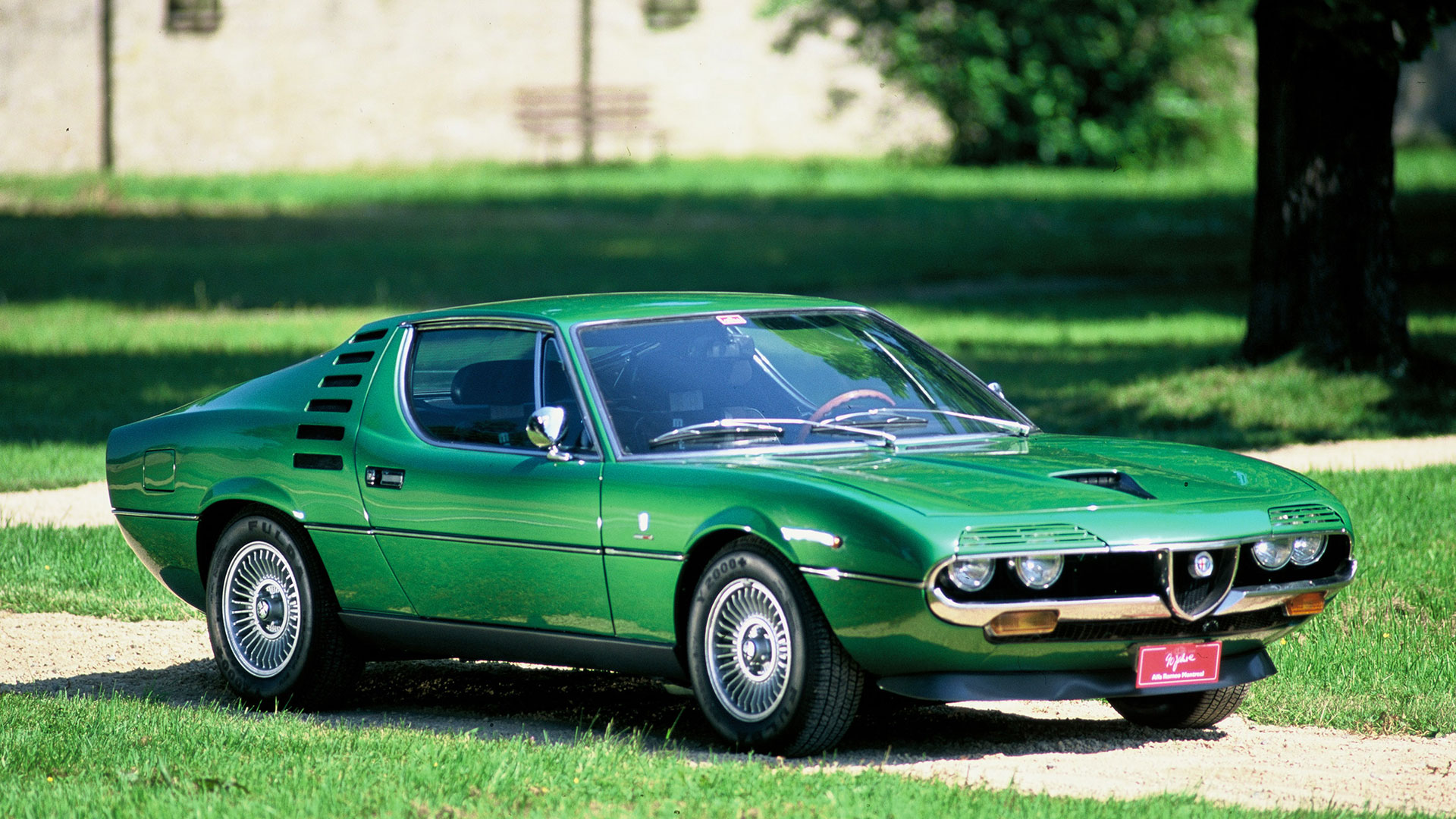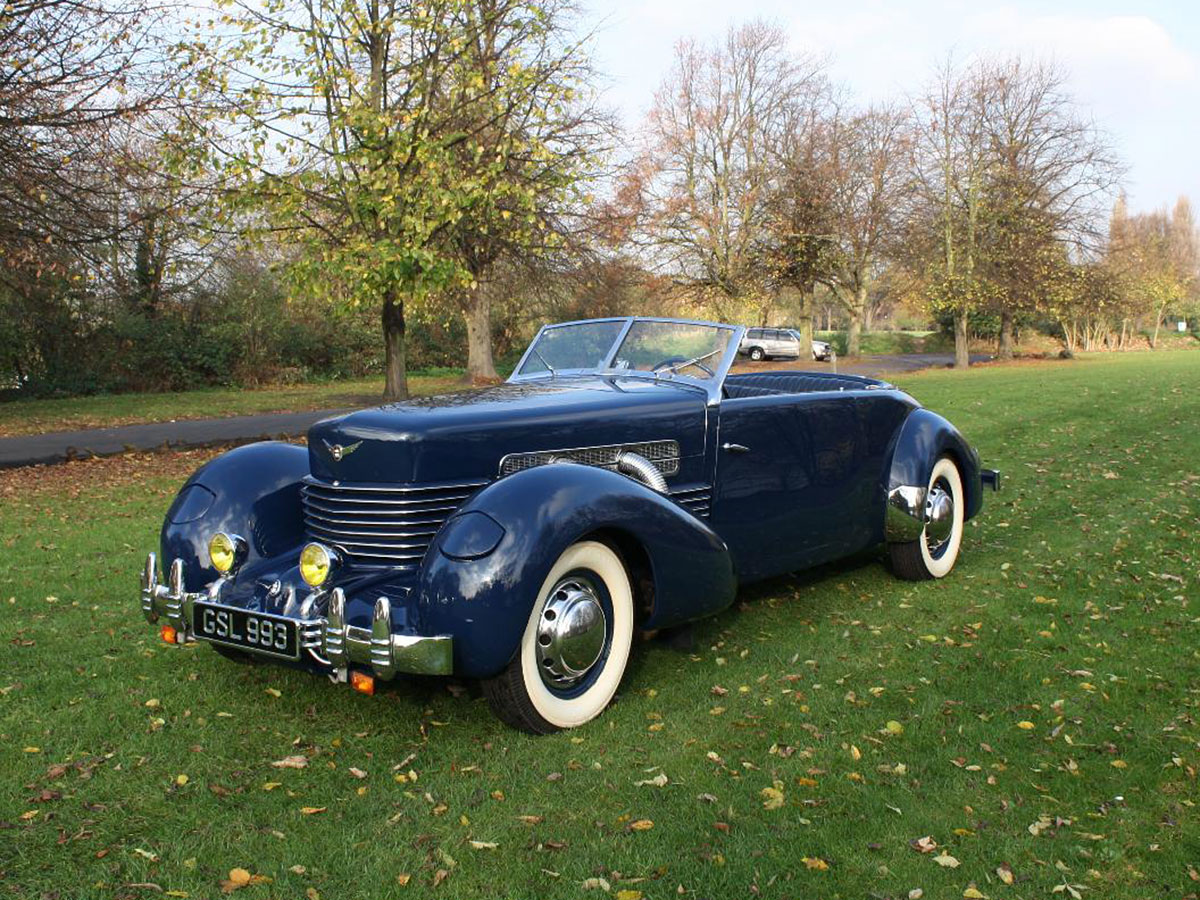

Eighty-three years ago today, a Duesenberg engineer patented a styling feature that would become every kid’s favorite part of supercar design, a hallmark of the Eighties, and a dominant styling cue for every Corvette between 1963 and 2004: the retractable headlight, also known as “pop-up” or “flip-up” lights.
Originally, automotive headlamps were just that: big lamps lashed to the fenders, originally fueled by substances like kerosene and carbide but eventually graduating to electric power. Most were round, giving cars of the Twenties and Thirties their characteristic wide-eyed faces. Like the horse carriages that preceded them, they were upright, and fairly rectilinear, lending them the aerodynamic efficiency of a Land Rover Discovery.
Then, in 1933, Pierce-Arrow released the extravagantly-swoopy Silver Arrow, one of the first cars designed with slipperiness in mind. The door openings were rounded, while the fenders fully enveloped the wheels and—more importantly, for our purposes—the headlamps, allowing them to lie flush against the car’s hood. That same year, engineer Gordon Beuhrig designed a “baby Duesenberg” featuring retractable headlights, patenting the technology on June 15. After the technology made its production debut on the Cord 810 in 1936, cars would never be the same.
It’s hard to describe what makes pop-up headlights so cool. Is it the gimmickry of another electronic gizmo? The menace that a flush face lends almost any car? Is it the thrill of having two lights jump, gopher-like, through the hood? All of the above? There’s no way to pin it down.
No, capturing the true awesomeness of the flip-up headlight requires looking at some of the best examples of the feature. So in honor of the technology’s 83rd birthday, The Drive presents thirteen of the coolest retractable-headlight-equipped cars ever produced.
Porsche 928

Porsche’s foray into the luxury GT market never unseated the 911 as the carmaker’s premier model, but it did offer customers a wildly-futuristic shape that never sagged during the car’s 17-year run. Part of that sleek appeal? The lights, which lay flush until needed, rising like two brilliant zombies to light the way.
Plymouth Superbird

Plymouth’s notorious homologation special boasted a bevy of race-ready aerodynamic features: nose cones, rear diffusers and a f***-you wing. At the front, of course, were the retractable fiberglass lights, lending the Superbird its famous razor-sharp nose.
Cord 810

The first production car with retractable lights was nonetheless given a disparaging name: Coffin Nose. (We do see the resemblance.) The electronic trickery needed to power the lights wasn’t yet viable, so 810 drivers were forced instead to manually raise and lower the lamps with cranks in the cabin.
Saab Sonnett III

Like the Cord, the Sonnett III’s retractable headlights are manually operated. At least that means no Sonnett owners will ever be left with a failure in the circuit, lending their elegant coupes a one-eyed padiddle.
BMW 850ci

BMW’s early-Nineties luxury coupe might be the poster child for “clean design.” Much of that successful minimalism was due to the hidden headlights, which helped allow the unrestricted 850CSi a 197-mph top speed.
Alfa Romeo Montreal

Despite its Canadian moniker, the Alfa Romeo Montreal was a true Italian car, down to the fiddly electronics. Many Montreal owners feel blessed when both lights rise and illuminate successfully. When they don’t? There are forums for that.
Aston Martin Lagonda

Gaydon’s riotously wedgy Lagonda would have had its rectilinear realness significantly undermined were it outfitted with traditional, bulgy lights. The retractable option allowed the designers to fit the car with a cartoonishly tiny grille.
Chevrolet Corvette (fifth-generation)

It’s not the most beloved retractable-light-equipped Corvette—all hail the C2—but the sleek-and-tidy-lighted C5 offered the final iteration of the cue. When the C6 and its exposed lights debuted, fans blanched.
Buick Riviera

Lean and mean, at least by Sixties American Car standards, the Riviera had its ominous vibes amplified with lights hidden behind a black grille. It’s a great car for poker players: Never let them see your eyes.
1976 Ford LTD

The Seventies were the second-coming of the Baroque Era. Proof? The doors behind which LTD’s lights live are decorated with little adhesive vinyl labels that say “Ford” in script.
Lancia Stratos

The headlights on the Bertone-designed, Dino V6-powered Stratos rally car are perhaps the least-interesting aspect of the beast. Still, they fit with the car’s extreme-wedge styling.
Ferrari Daytona

In its bid to be the most seductive car ever, the Daytona allows a peep of its lamps, though they’re ultimately kept from prying eyes behind a slatted covering. Then, after dusk, they emerge like ladies of the night.
Vector W8

Andre Agassi bought a Vector in 1989 for $450,000, and then returned the car, because it was so prone to failure. Vector warned Agassi not to drive the car until they worked out several early-production bugs, but the tennis star was too impatient. Still, at least it looked cool.